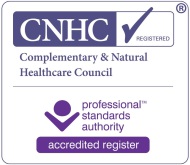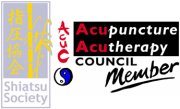"For more than 10 years, Daniel has been the only person I consider, when in need Acupuncture."
Imir, Yoga Teacher
What are Myo-Fascial Trigger Points?
Myo-fascial Trigger Points, often simply referred to as Trigger Points, are specific, sensitive spots found within skeletal muscles (Myo) and their surrounding connective tissue (Fascia).
Trigger Points are characterised by “knots”, painful hyper-irritable nodules that can be painful when touched or compressed. Though commonly found in muscles in the upper back, neck and shoulder area, trigger points can develop throughout the body, especially those that are frequently overused or under strain.
Trigger Points can form due to various factors, such as poor posture, an inactive lifestyle, repetitive movements, muscular imbalances and muscle tension caused by physical, mental and/or emotional stress.
What are the Characteristics of Trigger Points?
Trigger Points can cause localised pain in muscles, leading to increased muscle tension and stiffness while reducing the muscle's range of motion and causing discomfort.
Additionally, Trigger Points can cause referred pain, which is pain felt in a different area of the body from where the point is located. For example, a Trigger Point in the neck muscles may cause pain that spreads down into the arm or upper back, resulting in a myo-fascial pain syndrome.
Trigger Points can also lead to other symptoms, such as headaches, joint pain, dizziness, or nausea, depending on their location and severity.
What are the Treatments for Trigger Points?
Understanding, assessing and addressing Trigger Points is essential for the effective treatment of myo-fascial pain syndrome.
The treatment of Trigger Points often involves a combination of techniques aimed at alleviating pain, reducing muscle tension, improving mobility and enhancing overall muscle function.
My treatment methods include:
- Manual Soft Tissue Therapy: deep tissue massage, acupressure, and myo-fascial release are used to stretch and release tight muscle fibres, improve blood circulation and enhance mobility.
- Dry Needling Acupuncture: Involves inserting fine needles into the trigger point to deactivate it and relieve muscle tension and pain.
- Postural and Bio-Mechanical Correction: Addressing postural imbalances and movement habits that contribute to the development of Trigger Points is important.
- Stretching and Exercise: Targeted stretching and strengthening exercises may be given as a home treatment to improve muscle flexibility and strength.
My goal is not just to release the Trigger Points, but to achieve long-term, sustainable improvement by addressing any underlying imbalances or causal factors.
This includes facilitating changes in posture and movement patterns or biomechanics to prevent future health problems and promote overall well-being.
Harley Street Physiotherapy Clinic
3rd Floor,
25 Wimpole Street,
Marylebone,
London
W1G 8GL
Call reception:
+44 020 7224 4588
Appointments
Tuesday 10.00 - 19.00
Thursday 10.00 - 19.00
Fees
1hr - £140
30min - £80
90min - £200
*
Call or text Daniel:
+44 07932 671 463



